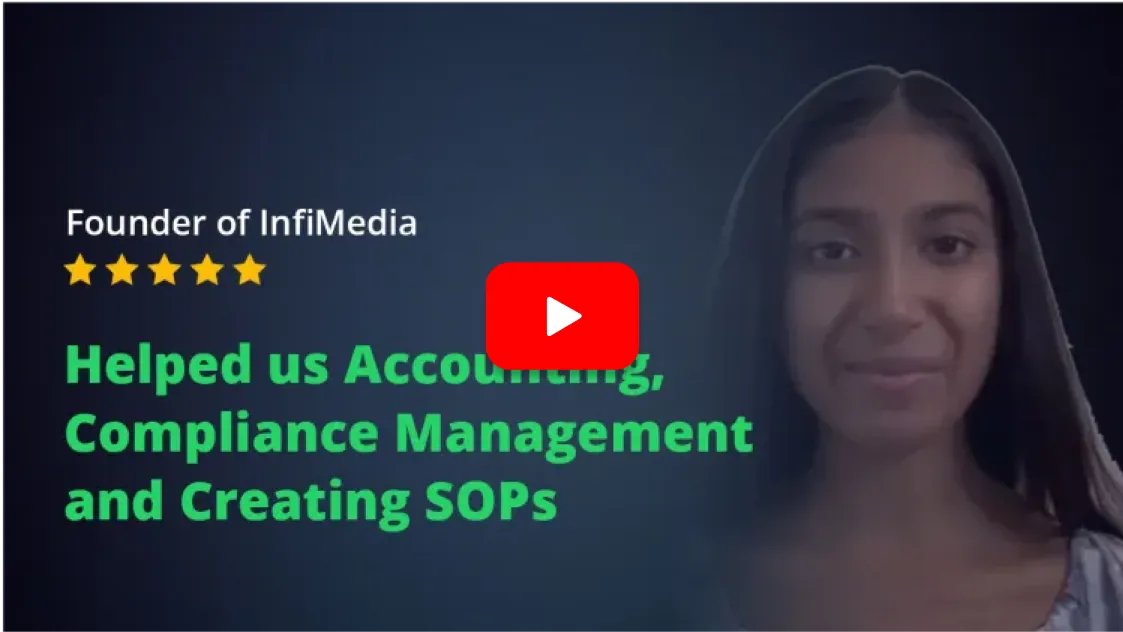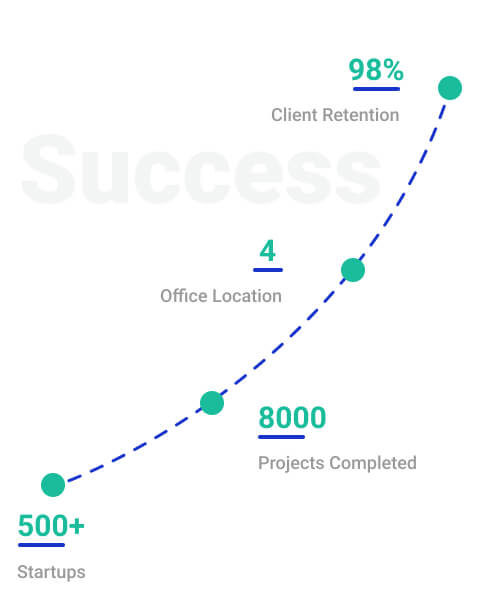As a small business proprietor, you might know about an MIS report. Talking about important business reports which help you analyse your business function, MIS reports are a must understand concept.
MIS reports are Reports that management requires to assess the performance of the organisation and make quicker decisions. A Management Information System or MIS as popularly recognised may be known by examining each of the words involved in its title. There is the management, the info and the system. Such a system has at its core a system which will reveal info to the company's executives.
What is MIS Report Meaning?
MIS Report stands for Management Information System and is an umbrella term for a set of accounts that show exactly how a business works every day, enabling your small business operations to be evaluated. They are a necessity of the management of a company to evaluate its performance and improve decision-making.
Business operations might include hundreds of ex. transactions per day and those will be documented. So, a sales summary report is one of the examples of Management Information System reports. Those reports contain important business dealings and that's why small business proprietors need to understand those management control reports.
Management Information System reports are generally prepared based on (automatically) collected data on a company for the management of that business. Management Information System reports consider different sources of data - human and digital. They contain several reports coming from various departments of a business and are utilised to assess a company's overall performance and make educated choices. They may identify issues, bottlenecks, pressure points, and opportunities inside your company. MIS reports will likely vary from business to business regarding what needs to be viewed and why.
MIS Report Full Form
MIS Report in full form is Management Information System Reports. The MIS and reporting concerns management, its information and associated systems. The full form of MIS Report is required for individuals who wish to know exactly how management information systems support effective decision making and organisational operations.
Benefits of MIS Reports
Given below are the benefits of Management Information System reports:
|
Benefits of Management Information System reports
|
Description
|
|
Data Management
|
Employees sort data to organise for Management Information System reporting. Organised and accurate data enables timely retrieval when required and defines a common data entry technique throughout the company.
|
|
Visual Representation
|
Management Information System reports may be presented as graphs, bars, pivot tables, and pie charts. Pictorial representations facilitate analysis and aid in decision-making.
|
|
Comparative Analysis
|
MIS stores historical information, allowing management to analyse reports over many years regarding revenue, performance, productivity, profit, expenditure, and investment.
|
|
Trend Analysis
|
Management Information System reporting uses stored parameters to examine trends in various departments. This helps in making essential decisions to enhance productivity and revenue growth.
|
|
Information Sharing
|
MIS collects information from different sources and meets the reporting requirements of different levels of management. It produces customised reports for micro and macro levels.
|
|
Long-Term Planning
|
Management Information System reports offer an overview of the business based on current data and can be combined with speculative and past reports for increased accuracy in long-term planning.
|
|
Identification of Problems
|
Management Information System report templates help identify troublesome areas in different departments, allowing executives to make informed decisions based on visual representations of data.
|
Components of MIS Report
The five key components of an effective excel MIS are mentioned below. Let us understand what role they play in the Management Information System reporting system.
|
Category
|
Description
|
|
People
|
Different stakeholders who utilise the MIS system
|
|
Data
|
Volumes of Data to be fed into the MIS system
|
|
Processes
|
Sequences of steps in collecting, storing & analysing Data into information
|
|
Hardware
|
All Hardware forms of computers (servers / workstations), printers, networking gear, etc helping in Data processing into information
|
|
Software
|
Integrated set of computer system / application programs (Operating system, Database Management system, Billing / POS Software, Accounting Software, ERP / CRM Software, etc)
|
Types of MIS Reports
Depending on variables like source data/expected outcome, target audience, the types of management information system reports can be classified into the following types:
|
Report Type
|
Purpose
|
Frequency
|
Users
|
|
Summary MIS
|
Provides a look at company performance across different divisions to top management.
|
Periodic (ex. monthly)
|
Top management
|
|
Cash Flow Statement MIS
|
Tracks inflow & outflow of cash, driven by sales, credit receivables, and purchases.
|
Daily or Weekly
|
Middle management
|
|
Profit MIS
|
Displays profit after taxes against planned periods, aids in decision-making and budgeting.
|
Periodic (ex., quarterly)
|
Management and Financial Analysts
|
|
Accounting MIS
|
Tracks assets, spending, income, and liabilities, impacting the company's financial position.
|
Periodic
|
Accountants and Financial Analysts
|
|
Trend MIS
|
Analyses segment, item, and category-wise performance over time to inform investment plans.
|
Periodic
|
Management and Strategic Planners
|
|
Sales MIS
|
Provides detailed insights into revenue, regions, products, and growth factors for decision-making.
|
Periodic
|
Sales and Marketing Teams
|
|
Exception MIS
|
Identifies anomalies and areas needing attention, helps in expense control and optimisation.
|
Periodic
|
Management and Financial Analysts
|
|
Inventory MIS
|
Tracks daily inventory levels, informs purchase decisions based on stock count and demand.
|
Daily
|
Purchase Manager and Inventory Management Team
|
How Do MIS Reports Work?
An Management Information System report is one that management prepares differently from business to business. Whether it be MIS report in tally or excel for MIS, and be it for accounting MIS report or finance MIS report,they can be drafted:
- Daily MIS report
- Weekly reporting
- Monthly MIS report
- Quarterly reporting
Management gets such reports from various departments inside the company and they should be formatted properly to help data analysis. These reports are generally prepared manually in smaller businesses that usually migrate to automated report generation.
Automation happens when systems are connected and reporting software can access raw data from departments, generally out of a central database.
Business people and supervisors will likely then analyse the reports to find out about the company's performance in the reporting period.
How Do You Prepare An MIS Report?
Management Information System reports may be prepared manually or using MIS software. Small businesses might not invest in MIS systems and may produce reports for business using spreadsheets. For both procedures, full and accurate raw data are a basic need. The most important requirement for the preparation of manual Management Information System reports is the service of personnel with good Microsoft Excel and reporting abilities.
These are some steps for preparing MIS report manually:
- Collect raw data from departments.
- Establish the report structure.
- Determine headings of columns and rows.
- Segregate and sort data by headings.
- Filter and eliminate data not pertinent to Management Information System report and decision-making.
- Make a dashboard template with Excel formulas and pivot tables.
- Final results extracted via advanced Excel selection mechanisms and processes.
Eligibility for Management Information System Reporting Services
Interested entities can get Management Information System reports services for the following:
- Start-ups and entrepreneurial endeavours.
- Small and medium enterprises (SMEs).
- Huge companies and multinational companies (MNCs).
- Retail and e-commerce businesses.
- Manufacturing/industrial firms.
- Consulting companies or expert services.
- Government organisations and public sector enterprises (PSUs).
- Educational institutions & colleges.
- Healthcare organisations, hospitals & clinics.
- Non-profit organisations/charitable trusts.
- Real estate & construction companies.
- Hospitality/tourism industry.
- IT - and software development companies.
Documents Required for Management Information System Reporting
Given below are the set of documents required for Management Information System reporting:
|
Document
|
Description
|
|
Data Collection Forms
|
Forms collecting information from various sources such as client demographics, personnel performance figures, production indicators, and sales figures.
|
|
Financial Statements
|
Statements (income, balance sheets, cash flows) evaluating economic performance, profitability, liquidity, and financial health of a business.
|
|
Sales Reports
|
Reports detailing sales activities including sales volumes, revenue, customer patterns, and overall product sales.
|
|
Inventory Records
|
Up-to-date records of total inventory, location, and value, aiding in stock level monitoring, identifying slow-moving items, and informed inventory management.
|
|
Customer Feedback Surveys
|
Surveys gathering commentary and insights from consumers to gauge satisfaction levels, identify improvement areas, and enhance overall customer experience.
|
|
Market Research Data
|
Data revealing industry trends, customer preferences, and competitive landscapes for strategic decision-making based on market demand.
|
|
Performance Evaluation Reports
|
Reports assessing the performance of individuals, teams, or departments using KPIs, feedback, and goal attainment metrics.
|
|
Project Status Updates
|
Updates on project progress, milestones, and challenges for effective monitoring of timelines, resource allocation, and risk management.
|
|
Expense Reports
|
Reports detailing costs incurred by individuals or departments including travel, accommodation, supplies, and other company expenses.
|
|
Quality Control Reports
|
Records documenting the application of quality standards and procedures to identify issues, improve quality, and ensure customer satisfaction.
|
What is the Procedure of Management Information System Reporting?
Given below is the process of Management Information System reporting:
|
Step
|
Description
|
|
1
|
Raw data collection from various departments to structure the report and determine row/column headings
|
|
2
|
Segregate raw data and group under appropriate headings. Filter out irrelevant information
|
|
3
|
Create a dashboard template using Excel formulas and pivot tables. Move segregated data to a new sheet and formulas for final results. Verify headings' format (ex., revenue column should have currency format) and check formulas thoroughly to prevent errors.
|
Why Choose StartupFino for MIS Reporting?
Management Information System reporting helps companies to succeed in India by offering timely information. It tracks key performance metrics, identifies trends and drives data driven choices for organisations. Ability to analyse and interpret financial data supports budgeting, forecasting and resource allocation.
StartupFino is an enterprise specialising in offering complete services for Management Information System reports. We can assist from initial advice to full compliance with all requirements and compliances.
FAQs
Management Information System reports are reports that gather, analyse and present information in a manner that helps organisation make informed decisions.
An excel Management Information System report contains information about the company's operation, performance and health.
The formal term MIS is Management Information System. MIS is computerised technology, person, organisation and relationship analysis.
Types of MIS consist of summary report, inventory report, cash flow statement and predictive data report.
Management Information System report is important to organisations to make informed decision, monitor performance, identify trends and track key metrics thereby enhancing productivity and efficiency.
Management Information System reports may contain different kinds of data including market data, operational metrics, inventory levels, customer information, sales figures, and financial data, as per the demands of the organisation.
The frequency of Management Information System report depends on the organisation requirement. It might be daily, monthly, weekly, quarterly or based on the demand for timely information and also the specifics of the business.
Management Information System reports are produced by professionals like information analysts, business analysts or internal Management Information System reporting teams like StartupFino. Though it could depend on organisational structure and resources.
Typical tools for Management Information System reports consist of spreadsheet software Microsoft Excel, business intelligence (BI) platforms, information visualisation tools including Tableau or Power BI and enterprise resource planning methods.
Management Information System reporting helps organisations in offering actionable insights, data-driven decision making, operational efficiency improvement, areas for improvement and assisting strategic planning and goal setting.
Yes, Management Information System reporting could be customised to an organisational needs. Reports are able to contain relevant metrics, charts and formats that match the organisation's goals and reporting objectives.































































